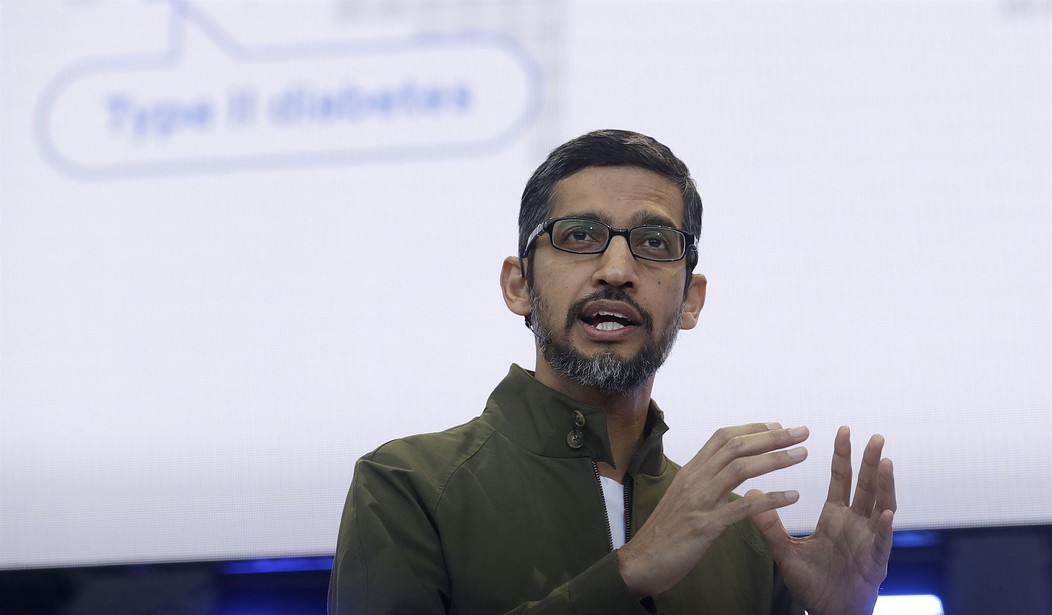In 2005, Google acquired the start-up Android and used the company to create an operating system for smartphones. In doing so, the company copied roughly 11,500 lines of code from Oracle’s Java SE computer platform. The Application Programming Interface (API) code Google copied proved instrumental to getting Android off the ground, as it allowed Google to call upon prewritten computing tasks for use in its programs.
On Monday, the Supreme Court ruled that Google’s use of Java API code constituted fair use under copyright law, so Oracle is not entitled to any remuneration from Google’s use of the essential code. In Google v. Oracle (2021), Chief Justice John Roberts and Justices Sonia Sotomayor, Elena Kagan, Neil Gorsuch, and Brett Kavanaugh joined Justice Stephen Breyer’s opinion, representing an ideologically mixed majority. Justice Clarence Thomas penned a scathing dissent.
“The majority purports to save for another day the question whether declaring code is copyrightable. The only apparent reason for doing so is because the majority cannot square its fundamentally flawed fair-use analysis with a finding that declaring code is copyrightable,” Thomas argued. He claimed that the Court “has used fair use to eviscerate Congress’ considered policy judgment. I respectfully dissent.”
Report: Google Sent Liberals, But Not Conservatives, a Vote Reminder. GOP Senators Want to Know Why
While the majority held that an analysis of the four factors of fair use law weighs in favor of Google’s copying of the API, Thomas claimed the opposite.
The Copyright Act lays out four guiding factors for fair use: “the purpose and character of the use; the nature of the copyrighted work; the amount and substantiality of the portion used in relation to the copyrighted work as a whole; and the effect of the use upon the potential market for or value of the copyrighted work.”
The Court held that the API code at question is “inherently bound together with uncopyrightable ideas (the overall organization of the API) and the creation of new creative expression (the code independently written by Google).” The Court held that Google copied the API in order to create something new in a “transformative use.” The Court also noted that Google copied about 11,500 lines of code, which constitute only 0.4 percent of the entire API at issue. Finally, the Court held that the Android operating system “is not a market substitute for Java SE.”
Thomas went through the four factors one by one. Copyright law favors fair use when the copyrighted work is more “informational or functional” than “creative.” While Thomas acknowledged that code is predominantly functional, he noted that “Congress determined that declaring and implementing code are copyrightable.” He argued that the Court’s holding on this issue creates “a distinction between declaring and implementing code that in effect removes copyright protection from declaring code.”
Thomas also argued that “by copying Oracle’s code to develop and release Android, Google ruined Oracle’s potential market” by eliminating “the reason manufacturers were willing to pay to install the Java platform.” Before Google released Android, Amazon paid for a license to embed the Java platform in Kindle devices, but afterward, Amazon used the cost-free availability of Android to negotiate a 97.5 percent discount on its license few with Oracle.
Google also “interfered with opportunities for Oracle to license the Java platform to developers of smartphone operating systems.” Before Google copied the API, “nearly every mobile phone on the market contained the Java platform.” By copying Oracle’s code, “Google decimated Oracle’s market and created a mobile operating system now in over 2.5 billion actively used devices, earning tens of billions of dollars every year. If these effects on Oracle’s potential market favor Google, something is very wrong with our fair-use analysis,” Thomas argued.
The justice also argued that Google did not use the code in a “transformative” way. “Google did not use Oracle’s code to teach or reverse engineer a system to ensure compatibility. Instead, to ‘avoid the drudgery in working up something fresh,’ Google used the declaring code for the same exact purpose Oracle did,” he wrote. “So, by turns, the majority transforms the definition of ‘transformative.’ Now, we are told, ‘transformative’ simply means—at least for computer code—a use that will help others ‘create new products.'”
Here’s How Google Can Shift 15 Million Votes Without Anyone Realizing It
“That new definition eviscerates copyright,” Thomas argued.
Finally, the justice noted that Google admits that “it copied the heart or focal points of Oracle’s work. The declaring code is what attracted programmers to the Java platform and why Google was so interested in that code. And Google copied that code ‘verbatim,’ which weighs against fair use.”
“Even if Google’s use were transformative, the majority is wrong to conclude that Google copied only a small portion of the original work. The majority points out that the 11,500 lines of declaring code—enough to fill about 600 pages in an appendix—were just a fraction of the code in the Java platform. But the proper denominator is declaring code, not all code. … The declaring code is what attracted programmers. And it is what made Android a ‘market substitute’ for ‘potentially licensed derivatives’ of Oracle’s Java platform.”
“Google’s copying was both qualitatively and quantitatively substantial,” Thomas noted.
In other words, claiming that Google only copied 0.4 percent of the entire code is like claiming that abortion constitutes only 3 percent of Planned Parenthood’s services — it is a sleight-of-hand argument that fudges the numbers to distract from the real issue at hand.
Tyler O’Neil is the author of Making Hate Pay: The Corruption of the Southern Poverty Law Center. Follow him on Twitter at @Tyler2ONeil.









Join the conversation as a VIP Member